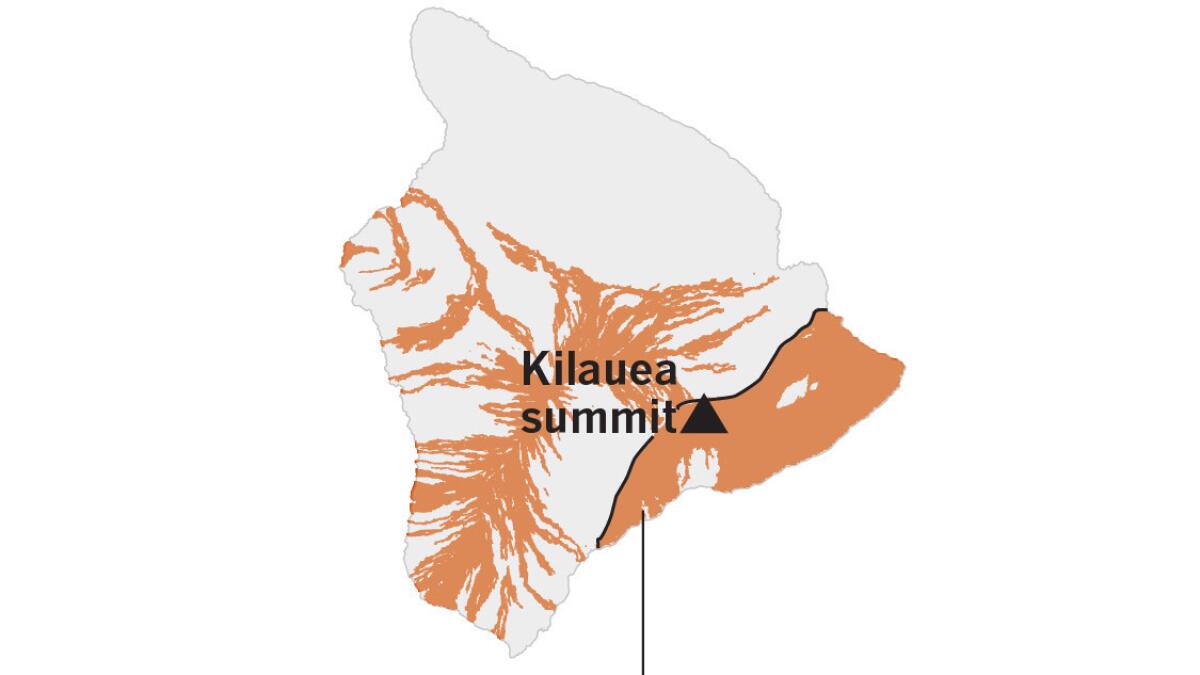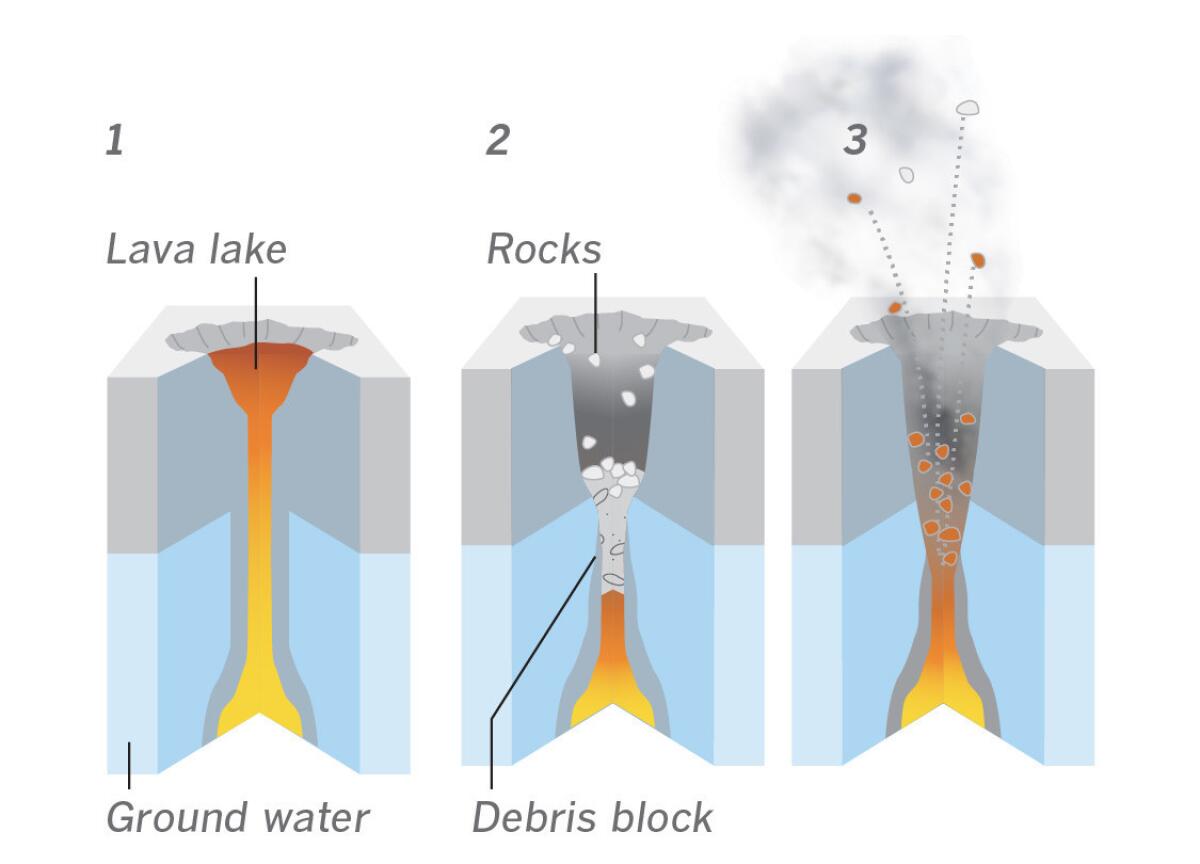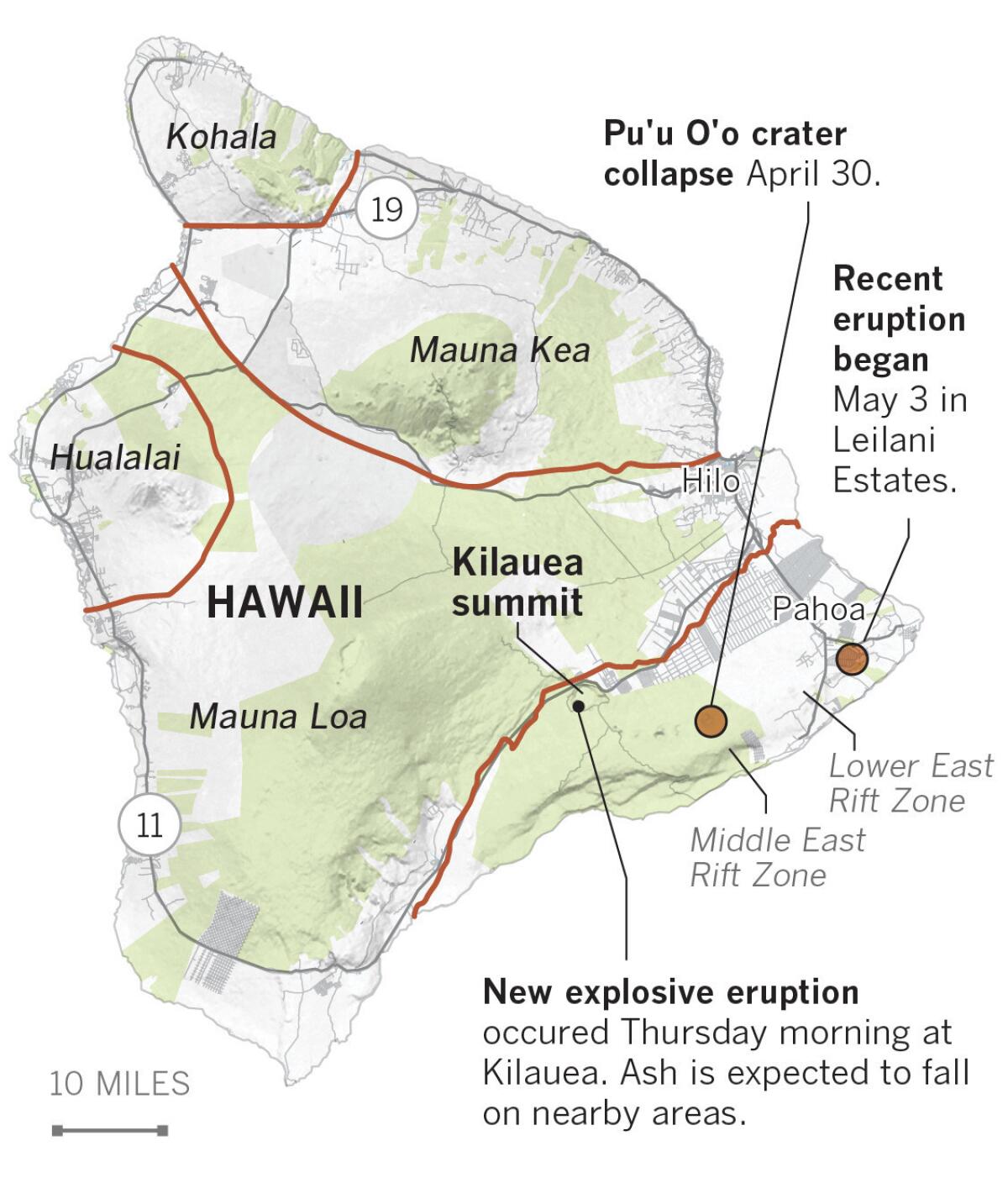The science behind the volcanic activity on Hawaii’s Big Island

The Kilauea Volcano, the most active in Hawaii, has forced the evacuation of thousands of people.
Hawaii’s Kilauea volcano has entered a new destructive period of eruptions, which has happened several times since it resumed producing lava in 1983. Here’s some context behind one of the world’s most active volcanoes, and Hawaii Island’s youngest:
Kilauea is mass building
Kilauea is currently in the second phase of growth, the “shield building” stage, where it is the most active and the most voluminous.
1. Pre-shield
Small eruptions below sea level.
2. Shield building
Volcanic mass grows above sea.
3. Post-shield
Magma cap flows, covers volcano.

In this stage, occurrences of lava flows and eruptions alternate. This can continue up to 2 million years.

Lava flows in past 1,000 years. Kilauea is covered with 90% young flows.
Beneath Kilauea
Lava eruptions have occurred at the volcano’s summit since 2008 and since 1983 on its eastern shoulder at a crater called Pu'u O'o, which collapsed on April 30, and sent lava searching for a new path downhill.

The cycle of volcanic eruptions and hazards
Scientists are concerned that if the lava column drops to the level of groundwater beneath Kilauea summit, it will cause more eruptions.

1. Magma column drops to water level.
Normally, when the lava lake level is high, temperatures are so hot that the groundwater in surrounding rocks is kept away from the magma.
2. Groundwater interacts with hot rock.
When lava meets the water, steam is created. Rocks can fall from walls as the lava lake lowers, and form a dam holding back steam.
3. Steam pressure builds, then explodes.
Rocks of up to 12 tons can shoot out of the volcano to a distance of half a mile. Marble-size rocks can fall for several miles, while falling ash is a concern 10 to 20 miles downwind.
Hawaii Island’s five volcanoes
Hawaii Island is made up of five volcanoes, four of which are considered active. Kohala is the oldest volcano on the island and inactive.

Sources: USGS, National Park Service, Smithsonian Institution, Nextzen, OpenStreetMap
Updated at 10:45 a.m., May 10, 2018: An earlier version of the magma flow underneath the Kilauea summet, showed a lava tube branching out just below the surface from Pu ‘u O’o crater. Path of magma continues further down.
Updated at 12 p.m., May 10, 2018: Included Kohala as the oldest and inactive volcano.
Updated at 10 a.m., May 17, 2018: Kohala volcano erupts.
Rong-Gong Lin II contributed reporting to this story.
ALSO
Risk of explosions in coming weeks from Kilauea volcano's summit, scientists warn
Start your day right
Sign up for Essential California for news, features and recommendations from the L.A. Times and beyond in your inbox six days a week.
You may occasionally receive promotional content from the Los Angeles Times.



